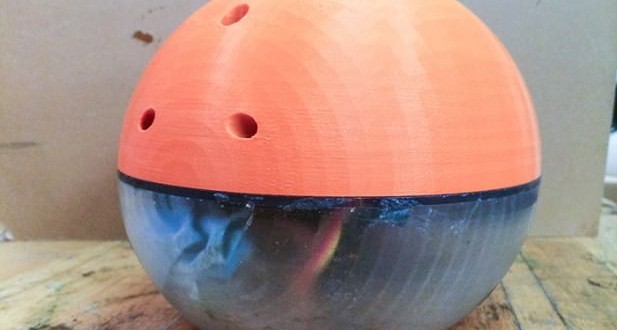Scientists at MIT have developed a new football-sized underwater robot that could soon help protect America’s ports. The robot can discreetly follow alongside a ship and perform ultrasound scans to search for smuggled contraband.
“It’s very expensive for port security to use traditional robots for every small boat coming into the port,” said Sampriti Bhattacharyya, a graduate student in mechanical engineering. “If this is cheap enough – if I can get this out for $600, say – why not just have 20 of them doing collaborative inspection? And if it breaks, it’s not a big deal. It’s very easy to make.”
The researcher was able to build the robot’s body using a 3-D printer. The robot is inherently unstable, similar to a fighter jet, so it can be easily maneuvered underwater. The device features a watertight chamber containing its “control circuitry, its battery, a communications antenna, and an inertial measurement unit” as well as a propulsion system made up of six pumps that expel water through rubber tubes. The robot runs on lithium batteries that last for about 40 minutes, which should give it ample time to inspect a number of crafts before needing to be recharged.
The device has not been tested with the ultrasound yet, but the next prototype will feature wirelessly rechargeable batteries which could increase its operation time to 100 minutes.
“I am particularly interested to see if this type of technology could find use in domestic maritime operations ranging from the detection of smuggled nuclear, biological, or chemical agents to drug interdiction, discovery of stress fractures in submerged structures and hulls, or even faster processing and routing of maritime traffic,” said Nathan Betcher, a special-tactics officer in the U.S. Air Force.
Agencies/Canadajournal
 Canada Journal – News of the World Articles and videos to bring you the biggest Canadian news stories from across the country every day
Canada Journal – News of the World Articles and videos to bring you the biggest Canadian news stories from across the country every day



